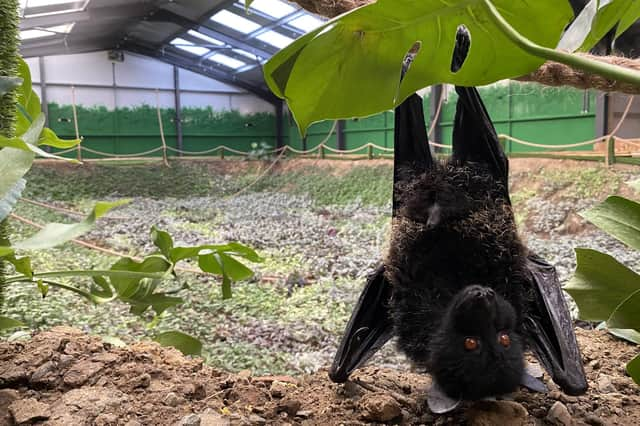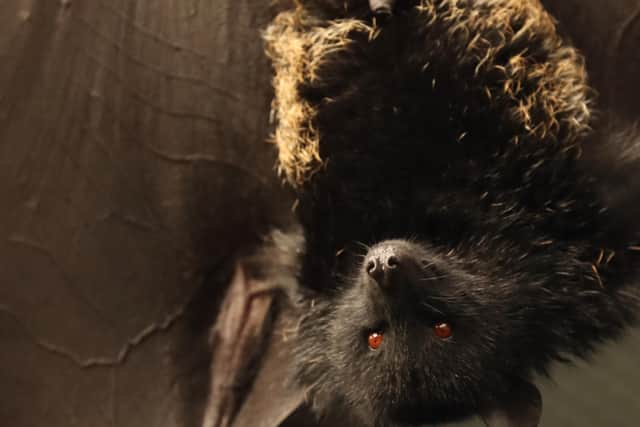Rare species of 'megabat' - third largest in the world - now at Northumberland Zoo


Already home to Snow Leopards and tiny harvest mice, the not-for-profit family zoo at Felton is now responsible for the world’s second captive breeding population of Livingstone’s Fruit Bats, becoming the UK
mainland’s only location where you can see these rare creatures.
Advertisement
Hide AdAdvertisement
Hide AdThe zoo has created a purpose-built, sustainable facility where the flying mammals can be shown at their best, with ample room to spread their wings and fly.
These ‘flying foxes’, as they are affectionately called, are the world’s third largest bat species. They are part of a vital captive breeding programme, in association with Gerald Durrell’s Jersey zoo, to increase their population in captivity and maintain a captive back-up group in case their wild counterparts become extinct.
Currently, there are only 98 of these bats in captivity in the world between Northumberland, Jersey and a zoo in France.
Zoo curator Maxine Bradley said: “It is an incredible responsibility and a massive achievement for us to join this breeding programme, holding almost 15% of the total captive population of these amazing bats.”
Advertisement
Hide AdAdvertisement
Hide AdUnlike most bat exhibits within zoos, the new ‘Fruit Bat Island’ exhibit is a daytime exhibit, allowing visitors to see the residents up close and in daylight.


Maxine added: “My goal is to change visitor perceptions with regards to bats. These bats have adorable fox-like furry faces, with big Mickey Mouse ears and huge eyes – I want people to fall in love with them and
gain a new favourite animal when they visit.”
Livingstone’s Fruit Bats originate from just two small islands that form part of the Republic of Comoros in the Indian Ocean, northwest of Madagascar.
The most recent survey found approximately 1,200 wild bats in as few as 25 different roost sites across remote areas of the two islands. This species is at risk of imminent extinction, which means they are likely to become extinct in the near future.
Advertisement
Hide AdAdvertisement
Hide AdVisitors to Northumberland Zoo will be able to see the bats on display in their new exhibit from December 27. Visitors can also learn more about the bats through the interactive Northumberland Zoo app and watch the story of the bats arriving on the zoo’s Youtube channel.